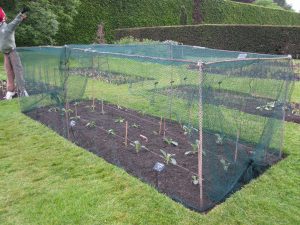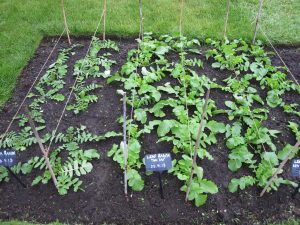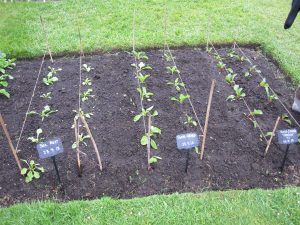This summer the Edible Gardening Project at the Botanics is working with four community gardens across Scotland to grow three wild plants that have given rise to familiar crops – cabbage, radish and beet. Apart from having fun growing, the aim of the project is to compare domesticated crops with their wild relatives to see how domestication has changed them. Selection and breeding changes plants over time and certain characteristics will dissapear and other will be enhanced.
The growers at Girvan Community Garden, Good for Ewe, Whitmuir Organics and Applecross Community Garden will assess disease, productivity, taste and then pass samples to the Rowett Institute of Nutrition and Health for nutritional analysis. This last aspect of the project is exciting because it will show whether or not the nutritional value of the plants has been changed by domestication. Nutritionally important compounds, like pigments (e.g. anthocyanins and carotenes), are often reduced in crops as other factors have driven the selection process. Will the wild plants be more nutritionally beneficial? This is what we might predict, but relatively little examination of this question has been carried out by trials like this one. So watch this space!
For each plant species we are growing the wild plant alongside a heritage variety and a modern day F1 hybrid. Heritage varieties are old varieties that may have been around for hundreds of years. F1 seed is produced by a controlled cross between two varieties and as such is more labour intensive to produce and costly to buy. The advantage of F1 seed comes from the vigour typically possessed by crosses between two distinct genetic strains.
In all cases the crops are treated as leafy greens as sea radish and sea beet do not produce a swollen root. In the case of radish two Asian leaf radish varieties have been chosen to provide the comparison for the wild plant. In the case of beet two Swiss chard varieties provide the comparison. Varieties are as follows:
Sea radish – leaf radish ‘Sai Sai’ – leaf radish ‘red stemmed’ F1
Sea beet – ‘Swiss Chard’ – Swiss Chard ‘Fantasy’ F1
Wild cabbage – ‘Early Winningstadt’ – ‘Kilaxy’ F1
All seeds were sown on 23rd April and all seed lots are successfully germinated at the Botanics. Some variation in germination times has been noted. Wild cabbage beat the cultivars, but in beet it was the other way around with the wild plant being slower than the cultivars. In radish all three germinated at about the same time.



